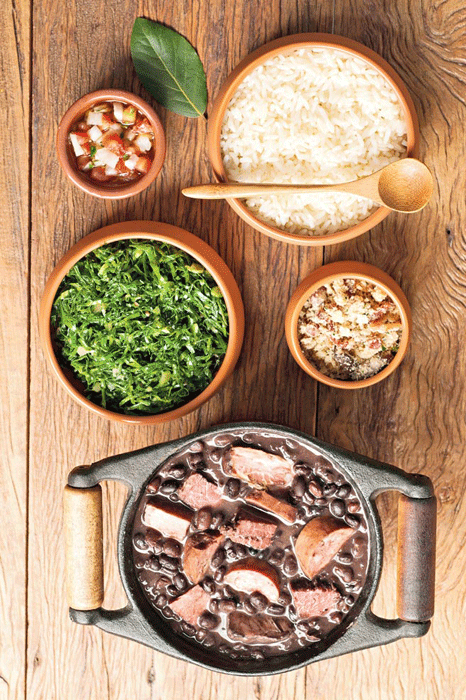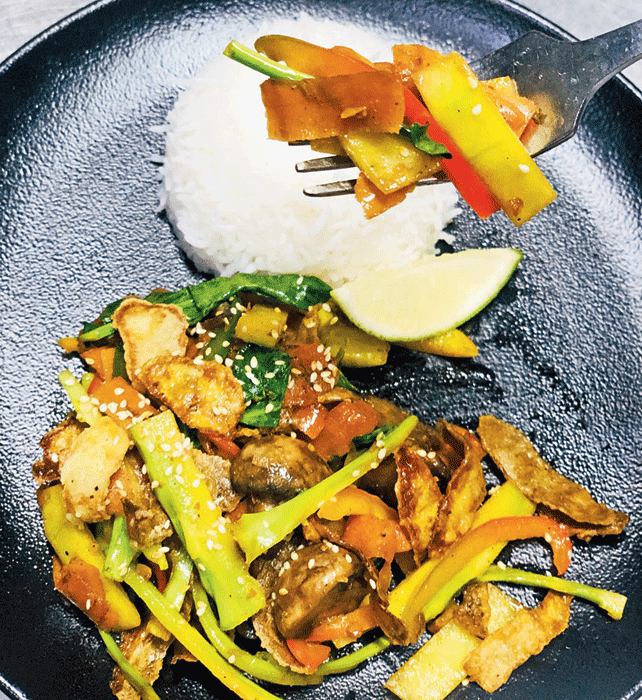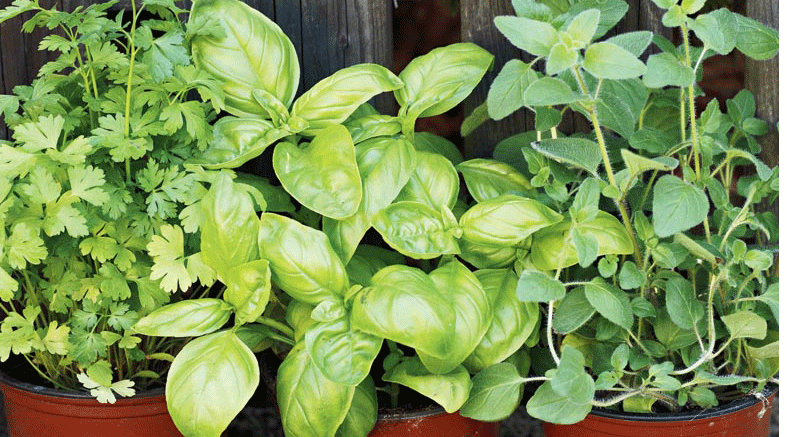At the beginning of April this year, while I was waiting for one of my columns to be published for this paper, I sent an SOS to the extremely cooperative and ingenious editor, asking her to try and prepone the release of the write-up. I had suddenly realised that my article was specifically on the then newly actuated ‘lockdown’ as a theme and that the lockdown was about to end that week as was the given guidance of the time and that if the article was published after the lockdown was over, readers might not relate to it well.
Little did I know. Although the article was published well in time, and I did receive my share of kudos, the lockdown, as we know well, didn’t end then, it continued and continues. The point I am making, perhaps, is that the present moment is the only moment we can control. While we can plan for the future, plans don’t, on many occasions, manifest themselves to our expectations.
Some readers having read my column got back to me saying that they have realised cooking as a true life skill and have channelled some of their energies into cooking for themselves and others during the lockdown, but most didn’t realise that they were in it for the long haul. While I write this column, sat in the middle of July, we still have no idea when we will get back to our normal lives.
It was said that ‘Circumstances are the rulers of the weak’ and, yet, with all our strengths we find the present circumstances almost completely ruling our lives and times. During this lockdown, along with the imminent inevitability of being self-dependent, came the exigency to be frugal and to make each bit last that much longer since whether it be food or other hitherto mundane supplies, we realised the inherent importance of many unnoticed activities for what they were and the effort that one needs to put into those to make our lives normal.
With respect to food, it was almost as if people suddenly realised that saving and repurposing should be a way of life and that whether it be the leftover idli or the apple skin, it’s worthy of some treatment to make it edible and, if possible, tasty. If necessity was the mother of invention, people started to understand that what is necessary for one is a luxury for the other and the tables can turn quicker than we thought.
Zero-waste cooking or cooking from ‘shoot to root’ became more of an achievable mission rather than being a conversation starter over starters. Let us discuss this trend of the ‘sustainable’ form of cooking, which is no more a fad now, especially with the realisation that short supply of food ingredients is independent of our capacity to be able to buy them.
Although we are now discussing using peels and piths and skin, accomplished chefs and mindful individuals across the globe have been practising, endorsing and extolling the virtues of zero-waste cooking for long.
Why Zero-waste Cooking?
Well, apart from the obvious, that we must respect food ingredients and aim towards consuming them in a sustainable way, using each bit possible, it is also true that food wastage is a huge global problem. As per a Natural Resources Defense Council (NRDC) report, America alone wastes 40 billion kg of edible food each year, almost 40 per cent of the total food produced.
Production of such unconsumed food gobbles up 20 per cent of America’s croplands and generates greenhouse gas emissions equivalent to 37 million passenger vehicles a year! All this when more than 40 million people in the US lack access to nutritious food. I have taken the example of US since this data is publicly available, but we can well imagine that the situation is probably even worse in some other countries, including our own.
In another scathing report cited in The CSR Journal, it was quoted that “India wastes as much food as the whole of United Kingdom consumes”. While the reasons for such wastages are manifold, it is also true that many people now understand their place in the value chain of food wastages and try and do their best to reduce it.
While we might not be able to immediately match the efficiency of the ‘no trash can’ restaurants of Denmark which have completely done away with the need to discard anything at all, or the proclivity of my good friend Snigdha whom I found scourging for ways to use papaya seeds after just dehydrating her apple peels, we still can certainly aim at using what is available to us in all its entirety, some as those are, while some, well, with a pinch of salt.
How To Go About It
While all cuisines across the world have dishes that use food scraps as ingredients, for some alluring dishes it has traditionally been more for just being able to feed more people more times than as true responsibility towards the foods.
I remember having eaten the iconic Brazilian dish feijoada in Rio de Janeiro once just to later find out that the dish was basically the result of the adventurism of desperate slaves to use each and every food ingredient that was thrown out by the wealthy slave traders. So the dish used the offal of the pig and some scrapped lentils and vegetables and in time it turned out to be this iconic dish that is known to be the national dish of Brazil.
Here are a few pointers that can help you enter the world of minimal food waste. Indeed, if a penny saved is a penny earned, a combo of discarded peels and piths can surely be a meal earned and we will see how.
Buy containers of all sizes. One of the reasons many of us throw away a part of our foods is that we are just too lazy to find a suitable container for those to be able to consider storing those in the freezer for
later use; it might not seem like much, but just think about it. In my fridge there are tens of containers of various sizes, neatly labelled, courtesy my 12-year-old who has taken food labelling to be a project of her own. We have ready meals all the time in our freezer, a whip here, a whiz there and addition of some freshly-cooked another makes for a delicious and quick, and yes, a zero-waste meal in a jiffy!

I remember having eaten the Brazilian dish feijoada in Rio de Janeiro once to later find out that the dish was the result of the adventurism of desperate slaves to use each and every food ingredient that was thrown out by the wealthy slave traders. In time it turned out to be this iconic dish that is now the national dish of Brazil The Telegraph
Grow it yourself
If you’re aiming for a zero-waste kitchen, one of the best ways is to understand how it is grown and try to grow it yourself (GIY). Coming from a farmer family, I can tell you with some aplomb that once you know what it takes for a farmer to cultivate food, chances are, you will have an entirely different view of food wastage.
One can start small, with some herbs such as parsley, coriander or mint, and then go on to some vegetables such as tomatoes, chillies and brinjals that can be easily grown in pots. With this pandemic having destroyed most of what we identified as ‘life’ in general, there certainly are some silver linings — reduction of pollution and the GIY movement being the top two perhaps — where more and more people across the world are now trying to grow their food, the best they can.
In essence indeed, it’s planting your own green shoots when there don’t seem to be many around, metaphorically.
Open Your Mind
It is said that whatever you hear about India is true. The opposite of that is also true. Whereas we have among the largest number of malnourished people in the world, it is also true that the food wastages are astronomically high. Traditionally and socially, in our country, especially in the well-to-do families, food waste and cooking with ‘discarded’ scraps are considered somewhat plebeian and something not preferred. While it is perfectly understandable to aim for the tawa-fresh roti and freshly-cooked curries, we need to look beyond, open our minds and taste buds to the recipes that can be created with the foods that we discard.
I have been a practitioner of zero-waste cooking for long, trying to inculcate it in my friends and family. It has always been very painful for me to see edible foods being wasted or not being attempted to be put to palatable usage. Over the years, I have tried rather diverse culinary experiments, from the humble broccoli stem pickle to fried chicken skin, or to powdering the eggshells (they are a great source of calcium) to include in pasta dough, I have done it all.
Some, admittedly, haven’t worked out the way I thought they would, but most have, along with the satisfaction of doing my bit towards the health of the planet and ourselves. I will not attempt at giving the recipe of something outrageous that no one will try, but will certainly initiate you into the world of zero waste with this simple but healthy and easy-to-cook dish that can be easily tried with or without being sniggered at (see The Stunning Scrap Stir Fry).
I have ended my last four columns by mentioning that I hope that my next column appears in better times. I end this one hoping for the same, for I know it will hold true one day, some day.

The stunning scarp stir fry Telegraph picture
The stunning scarp stir fry
Ingredients:
- Potato skin: 100g
- Green pea skin: 100g
- Watermelon rind: 100g
- Radish leaves: 200g
- Broccoli stem: 100g
- Carrot peel : 100g
- Capsicum: 50g
- Mushrooms: 50g
- Garlic: 25g
- Onions: 50g
- Lemon: 1
- Salt and pepper: To taste
- Sesame seed oil: 20ml
- Toasted Sesame seeds: 50g
So the recipe ingredients might look like your garbage bin staring back at you, but do believe me when I say that it’s a delicious dish, made ready in no time and is quite nutritious too. To the ones that it matters, the recipe is also gluten free and vegan.
Method:
- Wash the potato skin, coat in a mix of salt, pepper, a little oil and roast it in a hot oven (200C till crispy, about 20 minutes).
- Cut the watermelon rind (the white part only) into thin strips.
- Chop the radish leaves; ensure that the leaves are young and tender.
- Peel and slice the broccoli stem. Remove the inner membrane of the green pea skins and blanch briefly in salted water.
- Blanch the carrot skin briefly in the same water.
- Chop the onion, garlic and ginger. Slice the mushrooms and capsicum.
- Heat a wok or a frying pan, put in the sesame oil; once smoking, add in the ginger, garlic and onions, toss over very high heat.
- Add the broccoli stem, the watermelon rind, the radish leaves, capsicum and mushrooms, toss briefly.
- Add the green pea skin and toss at high heat until the vegetables are tender and the radish leaves have wilted.
- Finally, add the roasted potato skin, squeeze the lemon juice, sprinkle the toasted sesame seeds and serve with rice/noodles of your choice.
- A little bit of soya sauce can also be added although I avoided it.
Vikas Kumar is the executive chef of Flurys. You can reach him at vkumar@flurys.com











